The document discusses the concept of cognitive computing, highlighting its aim to replicate human-like intelligence through the integration of artificial intelligence, machine learning, and natural language processing. It emphasizes cognitive computing's applications across various industries, its ethical considerations, and the continuous evolution shaping its future. The document also delineates the differences between cognitive computing and traditional AI, outlining the advantages and limitations of cognitive computing technology.
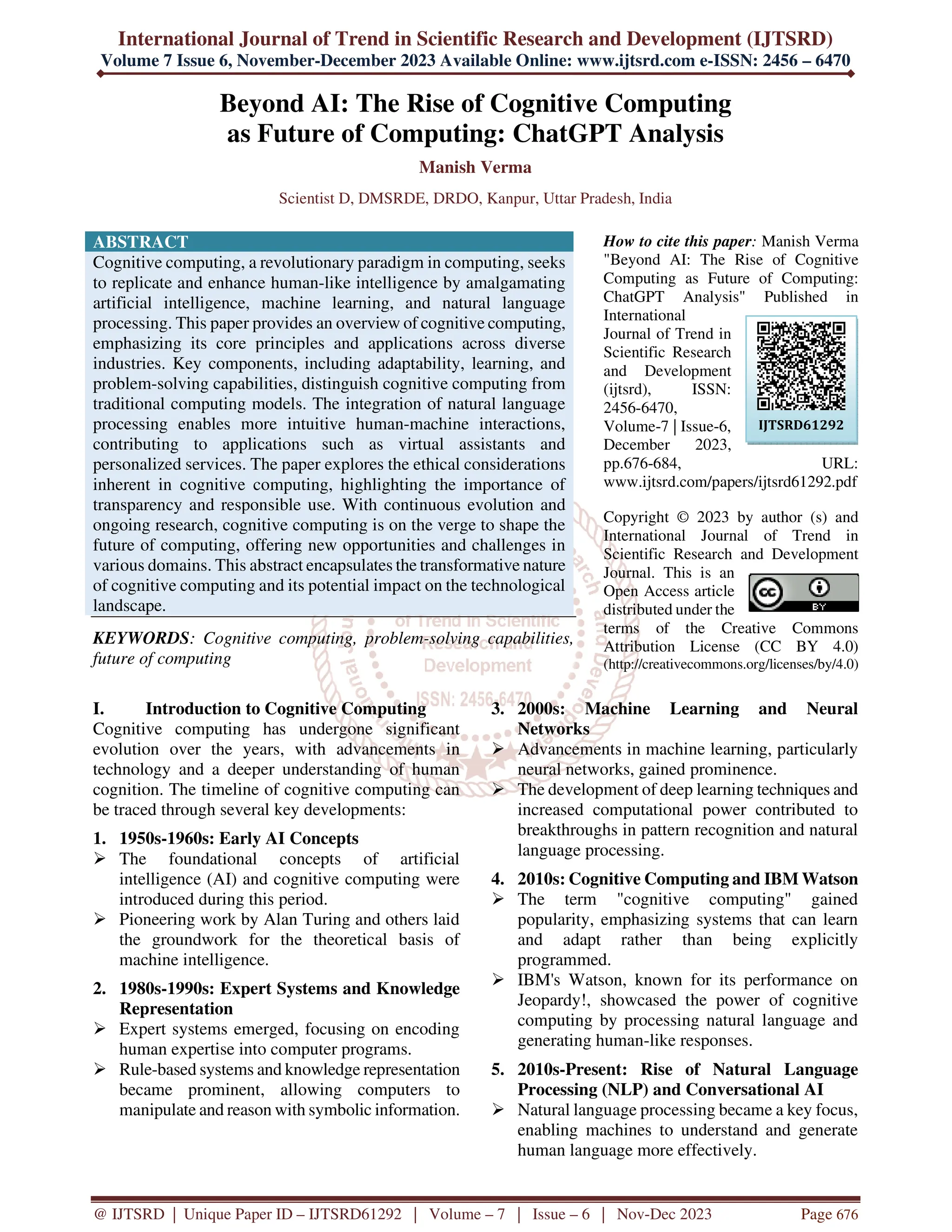
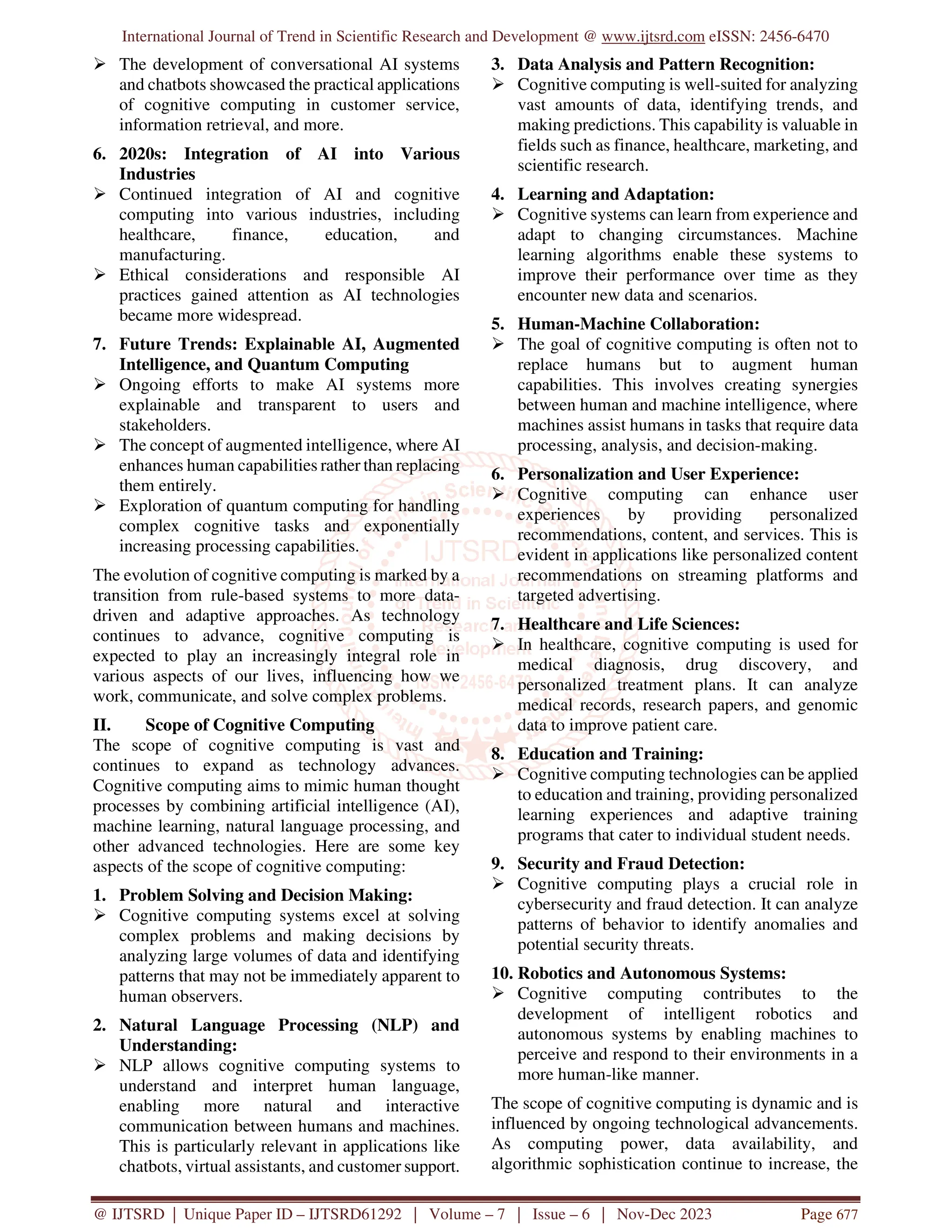
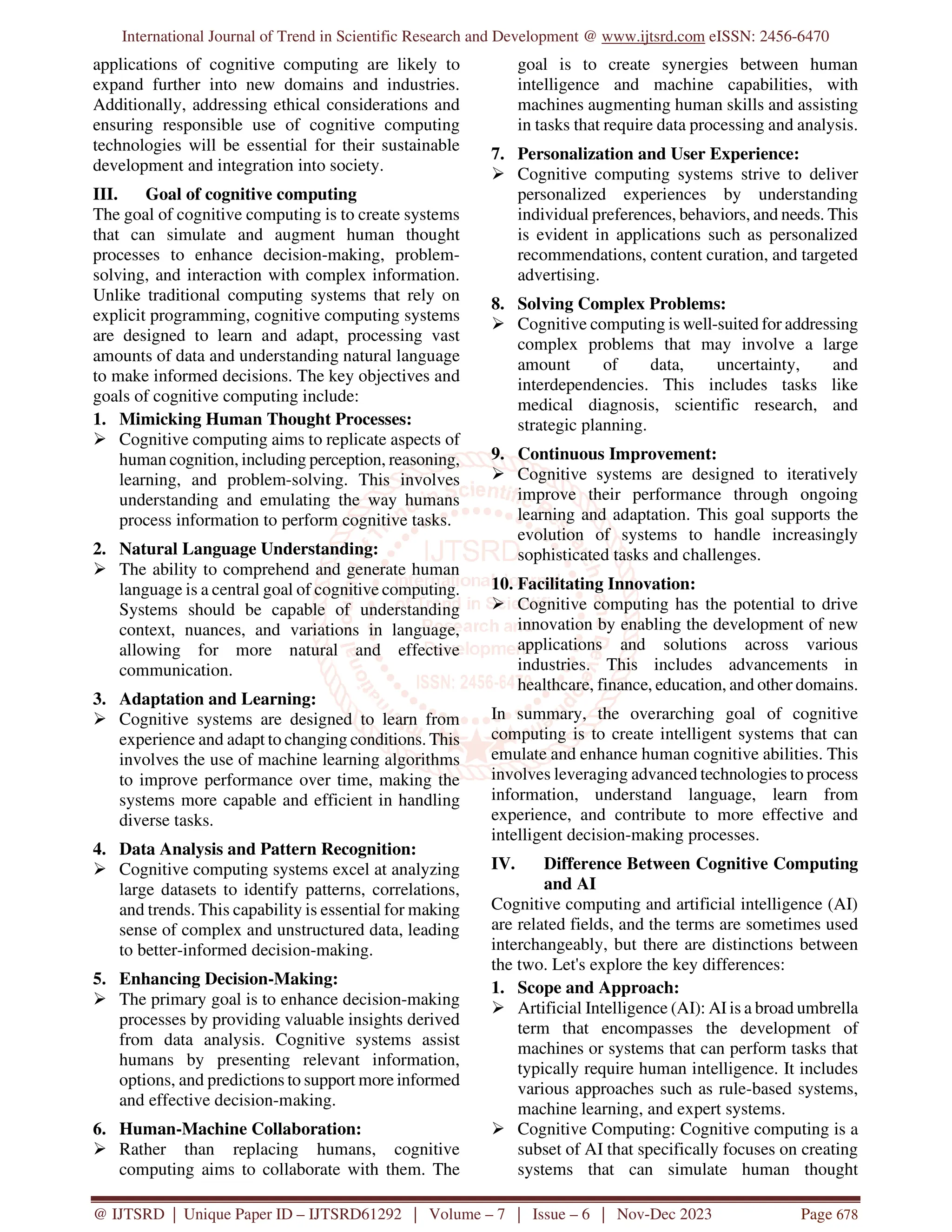
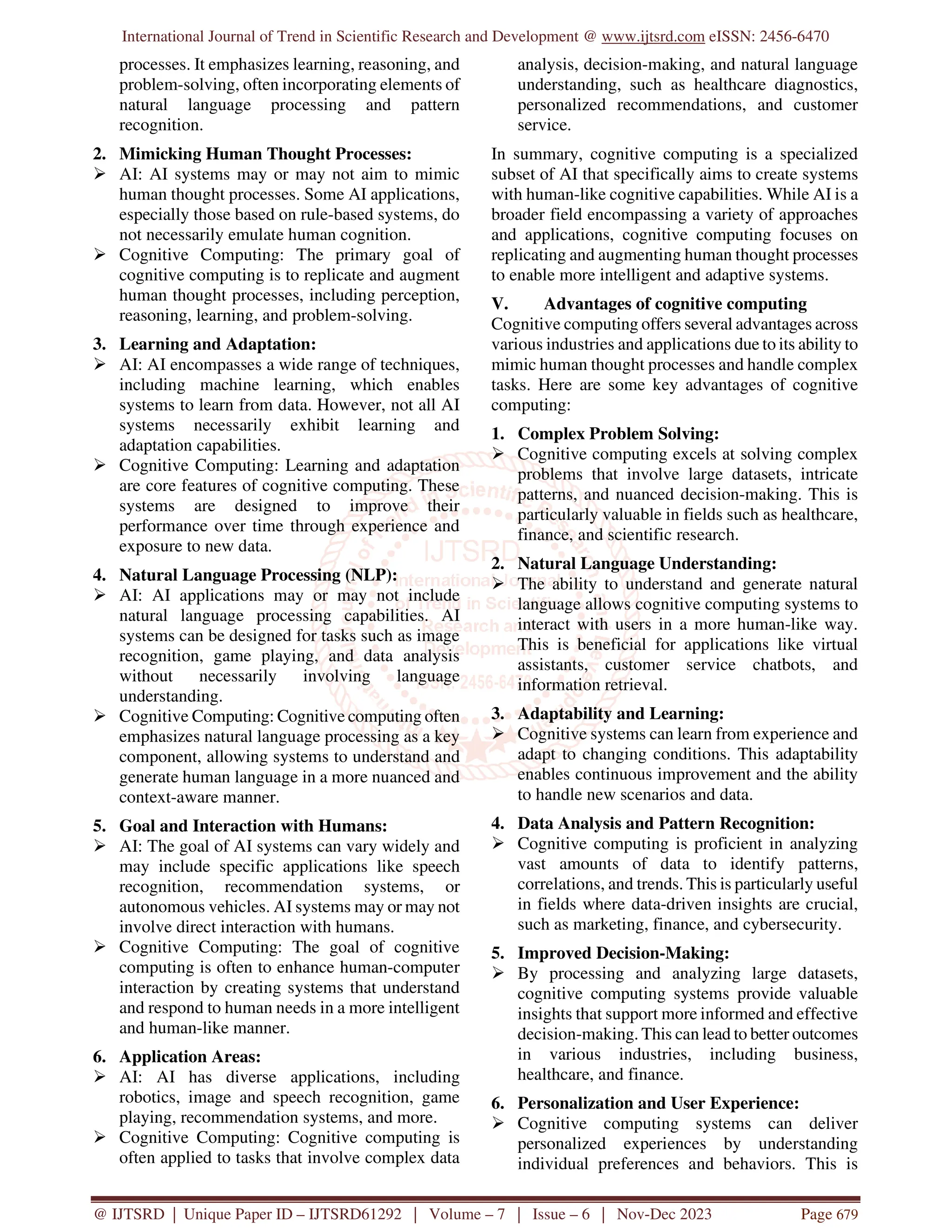
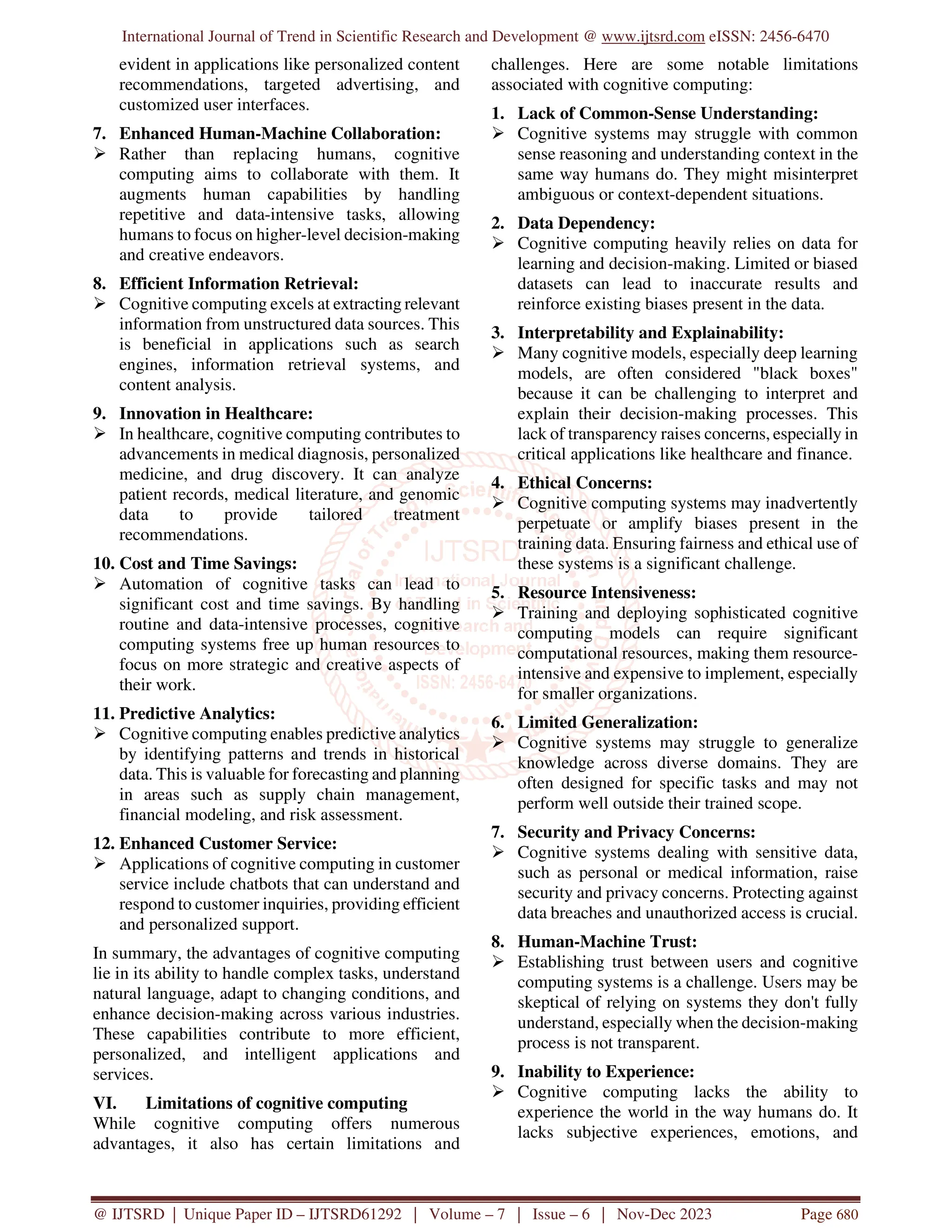

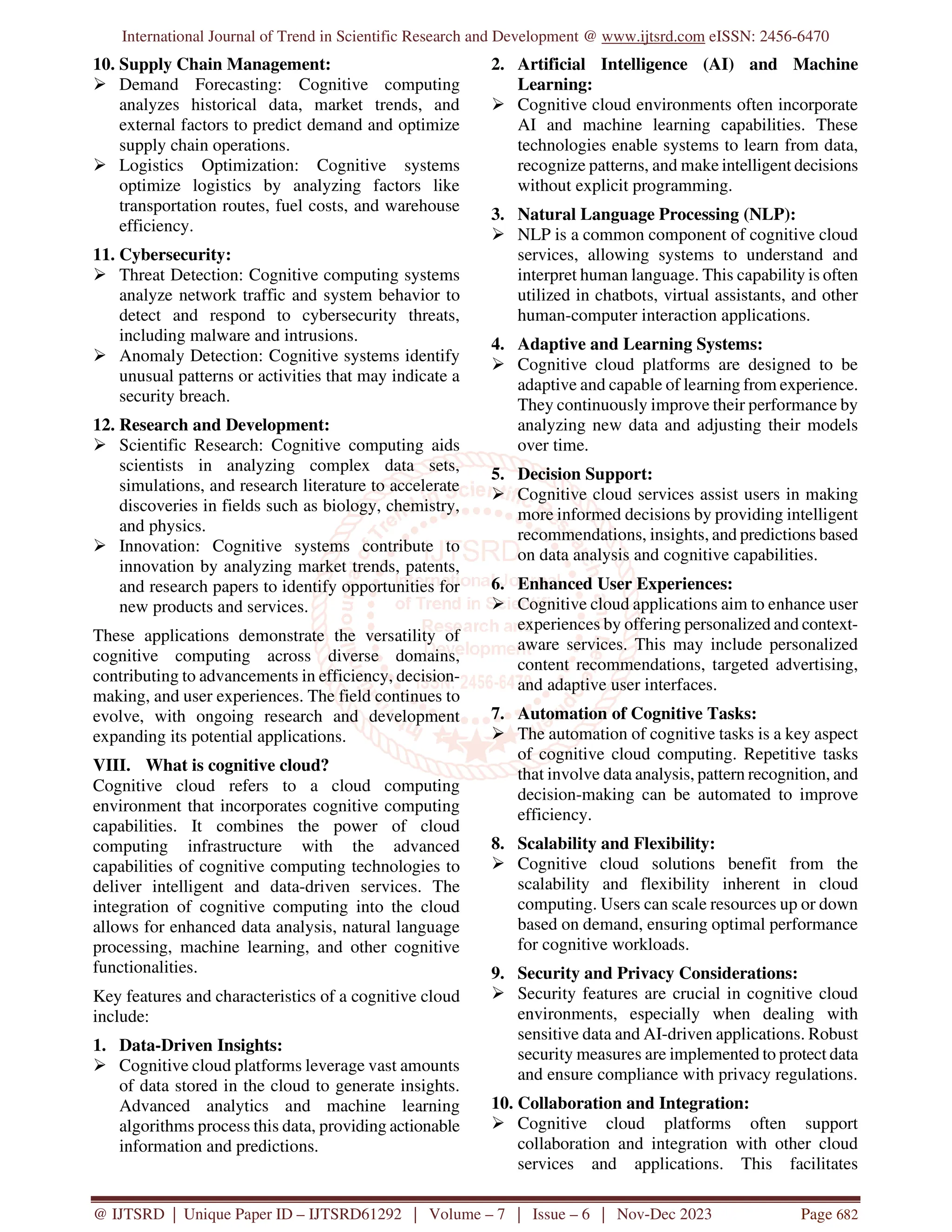
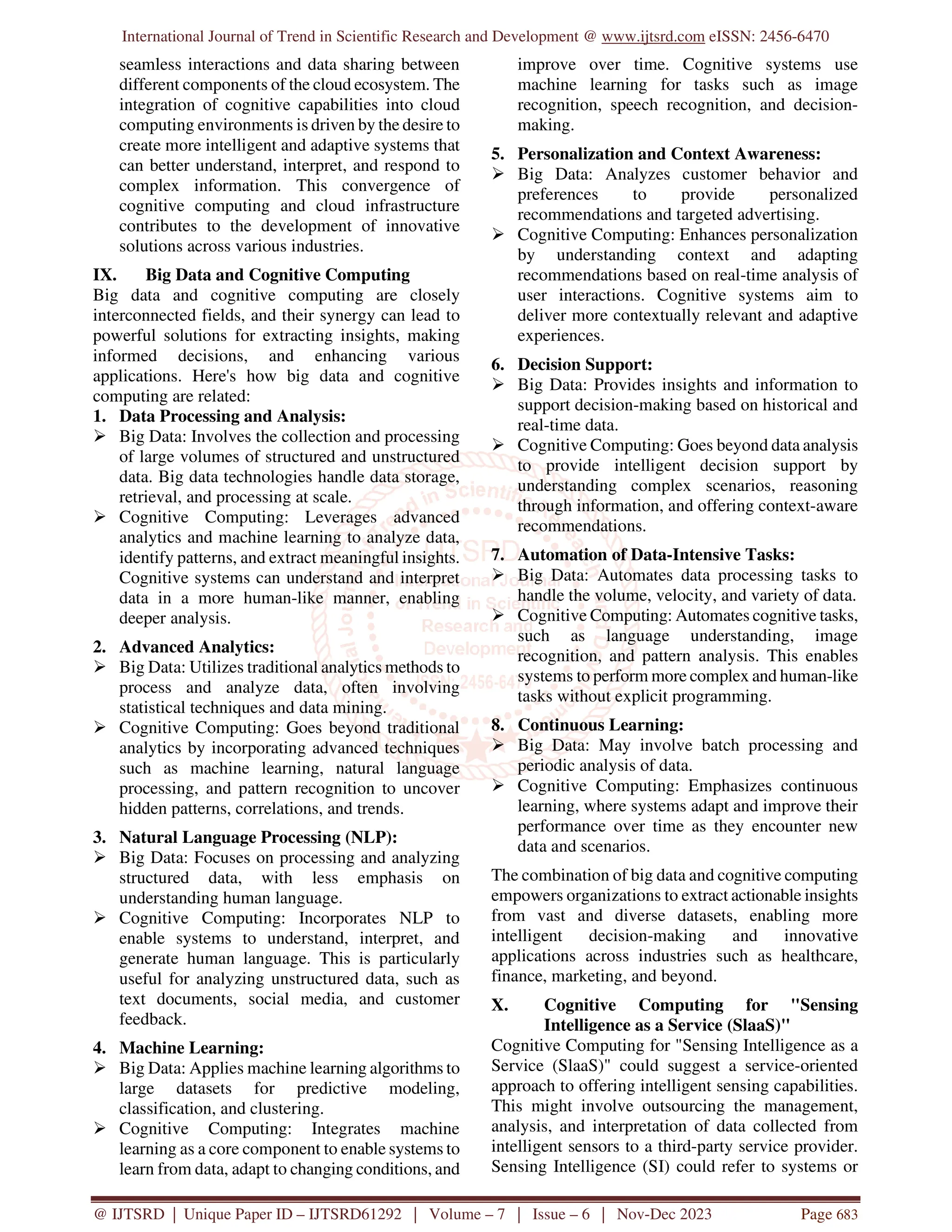
![International Journal of Trend in Scientific Research and Development @ www.ijtsrd.com eISSN: 2456-6470
@ IJTSRD | Unique Paper ID – IJTSRD61292 | Volume – 7 | Issue – 6 | Nov-Dec 2023 Page 684
technologies that possess the ability to sense and
gather data intelligently. It suggests the integration of
intelligence into sensing devices, possibly involving
technologies like sensors, IoT (Internet of Things)
devices, or other data-collecting mechanisms capable
of processing information intelligently.
XI. Conclusion
Cognitive computing is an advanced computing
paradigm that emulates human thought processes,
integrating artificial intelligence, machine learning,
and natural language processing. It stands out for its
adaptability, learning capabilities, and human-like
interaction. Key elements include problem-solving,
decision-making, and a focus on understanding and
generating human language. Cognitive computing
finds applications across industries, from healthcare
to finance, fostering innovation and efficiency.
Ethical considerations, continuous evolution, and the
collaborative nature of human-machine interaction
are integral aspects. As cognitive computing
advances, its transformative impact on computing and
human-machine collaboration is certain to grow.
Acknowledgement
We are thank full to Director DMSRDE and pupils of
industry 4.0 and cyber physical production systems
development.
References
[1] Chen, Min, Francisco Herrera, and Kai Hwang.
"Cognitive computing: architecture,
technologies and intelligent applications." Ieee
Access 6 (2018): 19774-19783.
[2] Coccoli, Mauro, Paolo Maresca, and Lidia
Stanganelli. "The role of big data and cognitive
computing in the learning process." Journal of
Visual Languages & Computing 38 (2017): 97-
103.
[3] Hurwitz, Judith, et al. Cognitive computing and
big data analytics. Vol. 288. Indianapolis:
Wiley, 2015.
[4] Demirkan, Haluk, Seth Earley, and Robert R.
Harmon. "Cognitive computing." IT
professional 19.4 (2017): 16-20.
[5] Schuetz, Sebastian, and Viswanath Venkatesh.
"The rise of human machines: How cognitive
computing systems challenge assumptions of
user-system interaction." Journal of the
Association for Information Systems 21.2
(2020): 460-482.
[6] Appel, Ana Paula, Heloisa Candello, and Fábio
Latuf Gandour. "Cognitive computing: Where
big data is driving us." Handbook of Big Data
Technologies (2017): 807-850.
[7] Manish Verma "Cyber-Physical Systems:
Bridging the Digital and Physical Realms for a
Smarter Future" Published in International
Journal of Trend in Scientific Research and
Development (ijtsrd), ISSN:2456-6470,
Volume-7 | Issue-6, December 2023,pp.296-
302,
URL:www.ijtsrd.com/papers/ijtsrd60163.pdf
[8] (1) (PDF) Cyber-Physical Systems: Bridging
the Digital and Physical Realms for a Smarter
Future. Available from:
https://www.researchgate.net/publication/37589
1149_Cyber-
Physical_Systems_Bridging_the_Digital_and_
Physical_Realms_for_a_Smarter_Future.
[9] Manish Verma "AI Safety and Regulations:
Navigating the Post-COVID Era: Aims,
Opportunities, and Challenges: A ChatGPT
Analysis" Published in International Journal of
Trend in Scientific Research and
Development(ijtsrd), ISSN:2456-6470,
Volume-7 | Issue-6, December 2023,pp.12-20,
URL:www.ijtsrd.com/papers/ijtsrd60087.pd
[10] (1) (PDF) AI Safety and Regulations:
Navigating the Post-COVID Era: Aims,
Opportunities, and Challenges: A ChatGPT
Analysis. Available from:
https://www.researchgate.net/publication/37533
1621_AI_Safety_and_Regulations_Navigating
_the_Post-
COVID_Era_Aims_Opportunities_and_Challe
nges_A_ChatGPT_Analysis.](https://image.slidesharecdn.com/89beyondaitheriseofcognitivecomputingasfutureofcomputingchatgptanalysis-240206052744-639a5952/75/Beyond-AI-The-Rise-of-Cognitive-Computing-as-Future-of-Computing-ChatGPT-Analysis-9-2048.jpg)